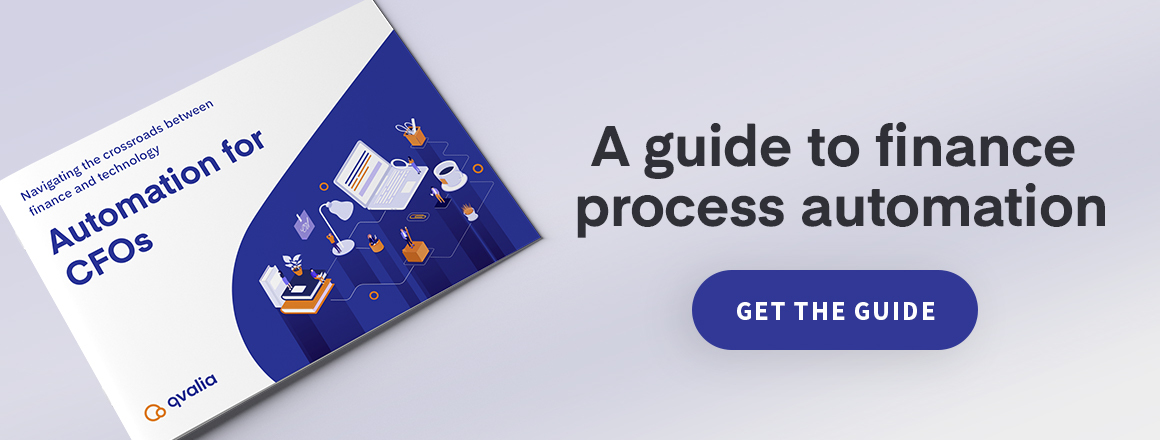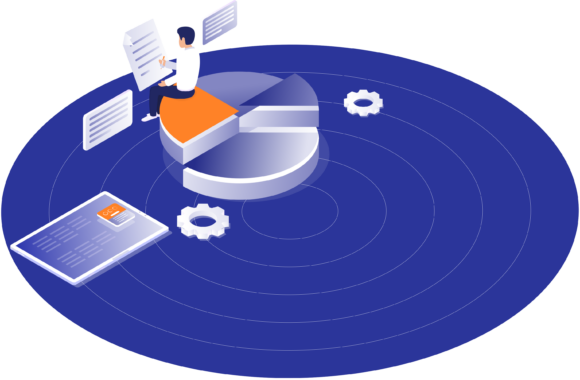
Improving efficiency should be your top priority when it comes to expanding your business. While inefficient workarounds can work for a smaller business, inefficiencies will stack up if left unfixed, leading to bloated costs in the long run.
If you’ve put any thought into making your finance department more efficient, chances are one of the options on your mind is automation. While it’s true that automation can be effective in increasing your efficiency, it isn’t the magic bullet that most companies think it is.
Many businesses make the mistake of investing in Robotic Process Automation (RPA) without properly considering whether it’ll be useful or not, if it’s a good fit for their business at all, or if there are other automation technologies that can create long-term sustainable results?
Is automation worth it?
Implementing automation for your business can take a significant investment. Before committing to a project to add automation to your business model, you should consider what the automation is trying to achieve. Long-term results require a more involved approach than simply scratching the surface, whether you’re looking to upgrade finance process and automate accounts payable or accounting, improve customer service, manage incoming emails, and much more.
When done right, automation can improve efficiency by removing the possibility for human error, as well as increase the speed of certain tasks. On the other hand, without proper planning and insights into the data that you’re managing, automation can do next to nothing for your business and can quickly become a sunk cost.
The bottom line is, automation is one of the best ways to improve efficiency at its best, so you should make sure you use it at its best. Look for factors that impact your profits within your business model. If human error has a large impact, or if your process is being bottlenecked by a certain process, automation is probably the best solution.
RPA: The quick fix—but is it sustainable?
RPA is one example of automation that many businesses have been employing. RPA is the term for digital applications that automate specific tasks, such as data entry, verification, and other similar tasks. RPA has been around for over a decade now, so its technology is well-established.
What can RPA do for my business?
RPA is a flexible technology and has many applications across all sectors. It works mostly as an interface on top of existing solutions to mimic the user’s tasks.
RPA can perform any simple task involving the reading, writing, and processing of data. For example, a RPA robot is able to read a PDF file, scan it for data, and send the data somewhere else, which can be useful for the management of supply chains and inventory systems.
The pros of RPA
The main benefits of RPA are primarily:
- Long hours. A well-calibrated RPA can perform any repetitive task that would otherwise be left to a human automatically..
- Freeing up employees. An employee who’s performing a task that a RPA could handle isn’t doing something else that’s potentially more productive.
- Reducing errors. RPA robots can only perform a select few tasks, but they don’t make errors the way humans do. The robots will do exactly what they are told, no more—no less.
- Speed. An RPA robot can perform repetitive tasks over and over, much faster than a human, and it won’t get tired. If your productivity is being bottlenecked by a certain task taking too long, RPA is one way to improve this problem.
The cons of RPA
Though there are advantages to RPA, there are some significant drawbacks. Here are some issues you should look out for:
- Long-term sustainability. RPA can become a serious decoy from the necessary long-term work needed to digitize and make processes and administrative work more efficient. There is a risk that you may focus on quick fixes rather than doing things the correct way from the start.
- Implementation. RPA might give you good value in stand-alone tasks, but it takes time and money to set up. It’s a bad idea to cut corners on RPA, too, since a miscalibration will lead to errors. An inefficient process won’t be transformed simply because you add some “smartness” at the top. You should know that almost half of all RPA systems fail when first rolled out, so the implementation might take more resources than you initially thought.
- Error magnification. RPA robots can’t detect some obvious errors that a human would be able to immediately point out. If your data has problems with it, RPA robots will not call it out, but pass it on, magnifying an error that might have otherwise been caught.
- Overall risk. Some problems aren’t a good fit for RPA, especially when the stakes are high. For example, if you need to handle your purchase invoices, it’s likely a better idea to use software that is able to understand and manage the data correctly from the start.
- Maintenance. Most RPA solutions have to be custom-made to fit your business. It likely won’t be worth it to invest in such a system if the way your business runs could change drastically in the future. Even minor changes in your setup can create significant disruption for your RPA robots.
Is RPA right for your business?
Overall, RPA is the right solution for some short-term problems, but in many cases, it’s the wrong solution for strategically-efficient long-term automation. Despite being a powerful tool, it can also waste time, effort, and budget. You should think carefully before investing in an RPA solution.
Why Qvalia is different
High data quality is one of the most important parts of an automation solution’s success. Higher quality data enables scalability and reduces the likelihood of costly errors. This is why Qvalia focuses on your data to achieve frictionless automated finance processes.
Our cloud-based platform provides complete solutions to automate accounts payable, accounts receivable, and accounting. E-invoicing is free of charge.
Download our ebook to learn more about how you can transform your business and take your finance team to the next level.



